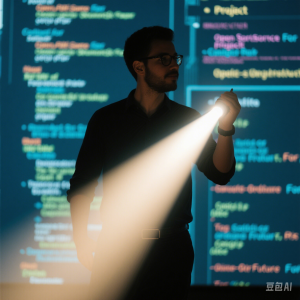Open – Source Projects: Illuminating the Path to a Technological Renaissance

Open – Source Projects: Illuminating the Path to a Technological Renaissance
In the dynamic realm of software development, open – source projects have emerged as the driving force behind countless technological advancements. They serve as vibrant ecosystems where developers from diverse backgrounds converge, collaborate, and co – create, fostering an environment of continuous innovation.
The Essence of Open – Source Collaboration
Open – source projects operate on the principles of transparency, accessibility, and collective intelligence. By making source code freely available, these projects invite developers worldwide to review, modify, and enhance software. This collaborative approach not only accelerates the development process but also leads to the creation of more robust and reliable software solutions. For example, the Apache HTTP Server, an open – source web server software, has been a cornerstone of the internet for decades. Its development is fueled by a global community of developers who contribute code, fix bugs, and implement new features. This collective effort has made Apache one of the most widely used web servers, powering a significant portion of websites on the internet.
Spotlight on Noteworthy Open – Source Projects
1. Django
Django is a high – level Python web framework that follows the model – view – controller (MVC) architectural pattern. It is known for its “batteries – included” philosophy, providing developers with a comprehensive set of tools and libraries out – of – the – box. This allows for rapid development of secure and scalable web applications. Django’s open – source nature has led to the creation of a vast ecosystem of plugins and extensions. The Django Package Index (Django Packages) hosts thousands of reusable applications, such as Django Rest Framework for building RESTful APIs and Wagtail for content management systems. These resources empower developers to build complex web applications more efficiently.
2. Keras
Keras is a popular open – source neural network library written in Python. It serves as a user – friendly interface for building and training deep – learning models, making it accessible to both beginners and experienced practitioners in the field of artificial intelligence. Keras’ simplicity and modularity have contributed to its widespread adoption. It can run on top of popular deep – learning frameworks like TensorFlow, Theano, or CNTK, allowing developers to choose the backend that best suits their needs. The Keras community actively contributes to the development of new layers, optimizers, and pre – built models, further expanding its capabilities.
Benefits for Developers in Embracing Open – Source Projects
For developers, participating in open – source projects offers a wealth of opportunities. Firstly, it provides a platform to learn from some of the best minds in the industry. By studying the code of experienced developers and engaging in discussions within the project community, developers can enhance their coding skills and gain insights into software design patterns. Secondly, open – source contributions can significantly enhance a developer’s professional profile. A strong open – source portfolio showcases a developer’s ability to work in a team, contribute to a larger project, and adapt to different coding styles. This can be a major advantage when seeking new job opportunities or career advancements. Thirdly, involvement in open – source projects allows developers to make a tangible impact on the global technology community. By contributing to projects that are used by millions, developers can leave their mark on the digital world.
In summary, open – source projects are not just repositories of code; they are thriving communities that are shaping the future of technology. By shining a spotlight on these remarkable initiatives, we hope to inspire more developers to join the open – source movement, collaborate, and contribute to the ever – evolving landscape of software development.




